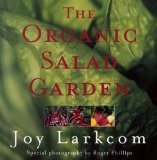
Lawns and Landscaping for September
September is a terrific time to work on a cool season lawn. Cool season lawns
consist of tall fescue, fine fescue and Kentucky blue grass. Planting, over seeding,
fertilizing and aeration are jobs that need to be done this month. Most lawns are tired
of the heat and low moisture conditions from the summer but with some guidance most can be re-energized.
- Go Shopping! Most folks think this is the end of the gardening season, but to be honest it is perfect gardening time!
You can plant all winter hardy plants, giving the roots time to establish before the ground begins to freeze. This time of year
nurseries discount their stock and it a great time for bargains.
- Plant fall blooming mums. Without a doubt, Chrysanthemums are great for brilliant fall color.
Bonus! ...if you plant them early enough to establish a decent root system, most of the hardier
types will survive the winter.
- Seed the lawn. Mid September to early October is the best time for seeding a lawn (Early spring is
the second best!). Lawn grass germinates at the greatest rate when daytime temperatures are
near 60° (15° Cel). and when soil is moist but not soggy.
- Divide your perennials. Most perennial plants (except those that are currently blooming) will divide
and transplant well during this cool, moist season. Do not transplant past October for the best results.
- Plant spring bulbs. Late September through October is the best time for planting your
favorite Tulips, Daffodils, Crocus, and more. They can be planted until the ground is hard with
ice.
- Remove diseased foliage. Any diseased or insect infested foliage should be burned. (not composted)
Although proper composting should kill most diseases, it is not advisable to add them to your own
compost bin. Contact your county recycling center for instructions on how to properly dispose of
non-compostable vegetation.
- Remove leaves from lawn. We have always done it- but do you know why? Okay, it does
look good, but it also helps prevent Snow Mold, a common fungus that often attacks and kills
grass that is smothered by moist deciduous leaves.
- Winter mulch marginal plants. Some plants will benefit from some extra winter insulation
such as clean straw or leaves. For best results and least amount of rodents and mold, wait until
the ground has started to freeze.
- Put the right plant in the right place -- with the right soil,
moisture, and sun or shade conditions, your plants will be
healthier, and many will not need irrigation.
- For a quick mulch, cut the plants in your vegetable and flower
gardens, but leave the material in the garden to prevent erosion
and provide organic matter for the soil. Use hand pruners, hedge
shears, or a sickle to chop the plants into mulch-size pieces.
Just be sure that the plant material has no disease or insect
infestations.
- Try planting ferns to fill in between and beneath shrubs, trees, grape arbors, and other shady spots.
Plant in early fall for best results.
- Don't retire the lawn mower when the growth of your lawn slows
down this fall. As long as the grass continues to grow, it should be mowed.
- Make a long-range plan to gradually convert your current landscape to the one you desire.
Don't pull out any ornamental plantings until you have the time and resources to replace them.
- Don't allow leaves to accumulate on the lawn. Rake them up regularly, and store in a pile for
use as mulch in your garden next summer. If leaves accumulate on your lawn and become matted
down by rain, they may kill the grass.
- Dig new garden beds for next spring. Incorporate plenty of
organic matter, such as leaves, and leave the soil rough to allow
good water penetration. Freezing and thawing will break up heavy
clay soils. Plant a cover crop, also called a green manure, to
increase the soil's organic matter content.
- Wood ashes contain phosphorous, calcium, and potassium and can
be placed on the garden, flower beds, or spread on lawn, but
don't overdo it. Avoid using wood ashes on acid-loving plants,
such as azaleas and blueberries, because ashes raise the soil pH.
- When landscaping for energy efficiency, choose evergreens for
the north and northwest sides of the house where they will block
winter winds without limiting winter sun. Block early morning and
late afternoon summer sun by planting deciduous trees to the east
and west of the house, including the southeast and southwest
corners. Don't plant shade trees to the direct south of the
house; the summer sun is so high in the sky it will shine onto
the house over all but the tallest trees, and the trees would
block cooling, southernly breezes.
- Early autumn is the best time of the year for the sowing of
grass seed. Grass sown in spring is often killed by hot, dry,
summer weather. For more vigorous growth, spread a very thin
mulch of clean straw over newly seeded areas. The straw shades
delicate seedlings from the hot sun and helps preserve moisture
in the soil, yet lets enough light through for germination. By
the time cold weather arrives, the grass is fairly well
established and ready to grow and thicken early the following spring.
- Healthy green grass outside the windows of your home can cool
the breeze off hot pavement by as much as 10 degrees F.
- Fall is usually cool and moist and a good time to plant trees
and shrubs. Research has shown that roots will continue to grow
until the soil freezes. This is true for both evergreens and deciduous plants.
- Lawns should be fertilized in late September or early October.
Consult your local Extension agent for the most recent
recommendations.
"Always remember the beauty of the garden, for there is peace."
-- Author Unknown

FREE Garden Journal!!
Join "Garden Notes" and plan for Harvest Success as you track and record your gardening progress.
Your Free Personal Garden Journal has pages for jotting down notes on the seeds you start,
your new plantings, when you fertilized, and even a graph to plot a new garden.

FREE Report
If you're interested in growing tomatoes, you've got to read this free report, because you're about to find out
3 age-old, tried and tested, organic tomato growing secrets that turn any tomato plant into a thriving source of the
juiciest, most
mouth-watering tomatoes you've ever tasted.
I didn't want to see another internet "eBook" on growing anything, but my husband signed up for Kacper's free report and I have to tell you, it is WELL worth the read. If you think you know everything about growing tomatoes, I challenge you to read Kacper's report. HIGHLY recommended!
Free Report Here

What's New?
Discover How To Easily Build An Attractive And Affordable Greenhouse That Will Grow Anything In Any Conditions… Also, building your own greenhouse just makes economical sense. You can build a greenhouse at just a fraction of the cost of buying a pre-built one. Most pre-built greenhouse you buy need to be assembled anyway, you’re really just paying hugely inflated prices for the material.
Click Here!
Book of the Month

Based entirely on organic gardening principles. This says it all. Joy's book has been fully revised and updated and includes extensive new reading, particularly
on oriental and fruiting vegetables, and did I mention, is now entirely based on organic gardening practices.
Read More...






